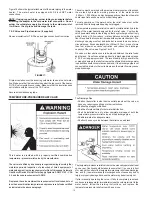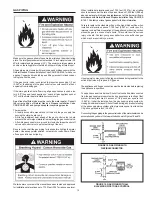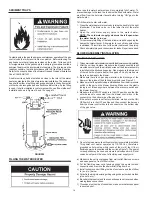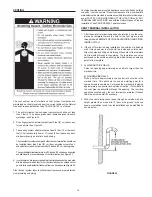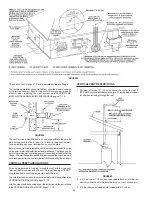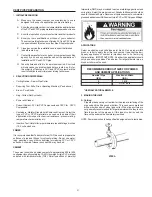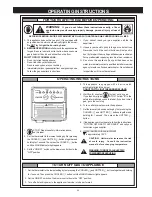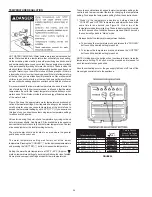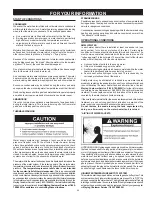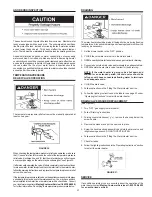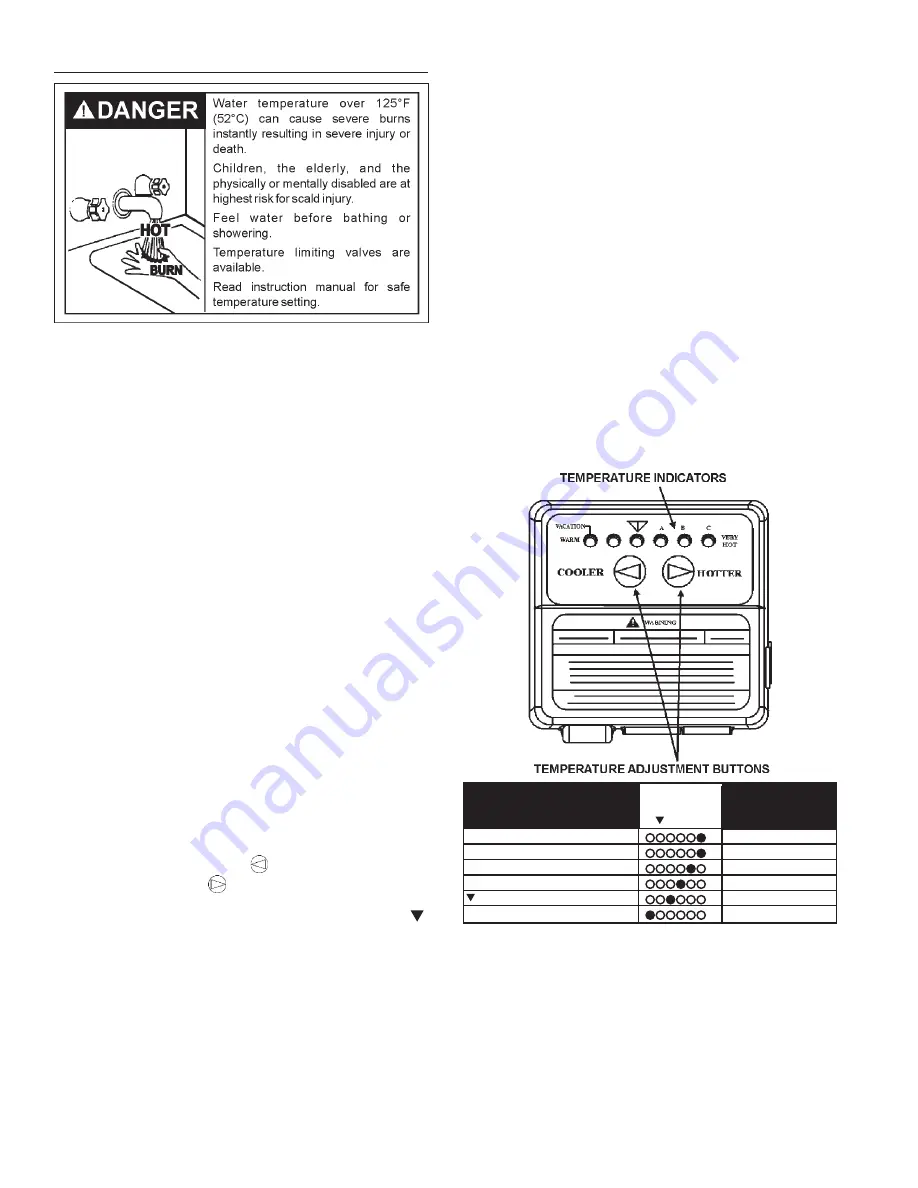
24
TEMPERATURE REGULATION
HOT WATER CAN SCALD: Water heaters are intended to produce hot
water. Water heated to a temperature that will satisfy space heating,
clothes washing, dish washing, and other sanitizing needs can scald
and permanently injure you upon contact. Some people are more likely
to be permanently injured by hot water than others. These include the
elderly, children, the infirm, or physically/mentally handicapped. If anyone
using hot water in your home fits into one of these groups or if there is
a local code or province law requiring a specific hot water temperature
at the tap, then you must take special precautions. Never allow small
children to use a hot water tap, or to draw their own bath water. Never
leave a child or handicapped person unattended in a bathtub or shower.
It is recommended that lower water temperatures be used to avoid the
risk of scalding. It is further recommended, in all cases, that the water
temperature be set for the lowest temperature that satisfies your hot
water needs. This will also provide the most energy efficient operation
of the water heater.
Figure 26 shows the approximate water temperatures produced at
various thermostat settings. Short repeated heating cycles caused by
small hot water uses can cause temperatures at the point of use to
exceed the thermostat setting by up to 30°F (17°C). If you experience
this type of use you should consider using lower temperature settings
to reduce scald hazards.
Valves for reducing the point-of-use temperature by mixing cold and
hot water are available. See Figure 2. Also available are inexpensive
devices that attach to faucets to limit hot water temperatures. Contact
a licensed plumber or the local plumbing authority.
The water heater should be located in an area where the general
public does not have access.
The water temperature setting was factory set at the lowest
temperature; Pressing the “COOLER”
button decreases temperature
and pressing the “HOTTER”
button increases the temperature.
Setting the water heater temperature at 120°F (49°C) (Approx. “
”
mark on temperature setting of gas valve) will reduce the risk of scalds.
Some provinces require settings at specific lower temperatures.
To avoid any unintentional changes in water temperature settings, the
control has a tamper resistant feature for changing the temperature
setting. To change the temperature setting follow these instructions:
1. “Wake Up” the temperature indicators by holding down both
“COOLER” and “HOTTER” temperature adjustment buttons at the
same time for one second, see Figure 26. One or two of the
temperature indicators will light up. These indicators will only remain
on for 30 seconds if no further buttons are pressed. After 30 seconds
the control will go back to “Sleep” mode.
2. Release both of the temperature adjustment buttons.
a. To decrease the temperature press and release the “COOLER”
button until the desired setting is reached.
b. To increase the temperature press and release the “HOTTER”
button until the desired setting is reached.
NOTE: Holding down the button will not continue to lower or raise the
temperature setting. The button must be pressed and released for
each temperature change desired.
Should overheating occur or the gas supply fail to shut off, turn off the
manual gas control valve to the appliance.
Time to Produce
Display
2nd and 3rd Degree
Temperature Setting
A B C
Burns on Adult Skin
C-Flashing = approx. 160°F (71°C)
About 1/2 seconds
C = approx. 150°F (66°C)
About 1-1/2 seconds
B = approx. 140°F (60°C)
Less than 5 seconds
A = approx. 130°F (54°C)
About 30 seconds
= approx. 120°F (49°C)
More than 5 minutes
WARM = approx. 80°F (27°C)
- - - - - - - - - - - - -
FIGURE 26.
Summary of Contents for HV640HBVITCGA
Page 3: ...3 SAFETY PRECAUTIONS ...





